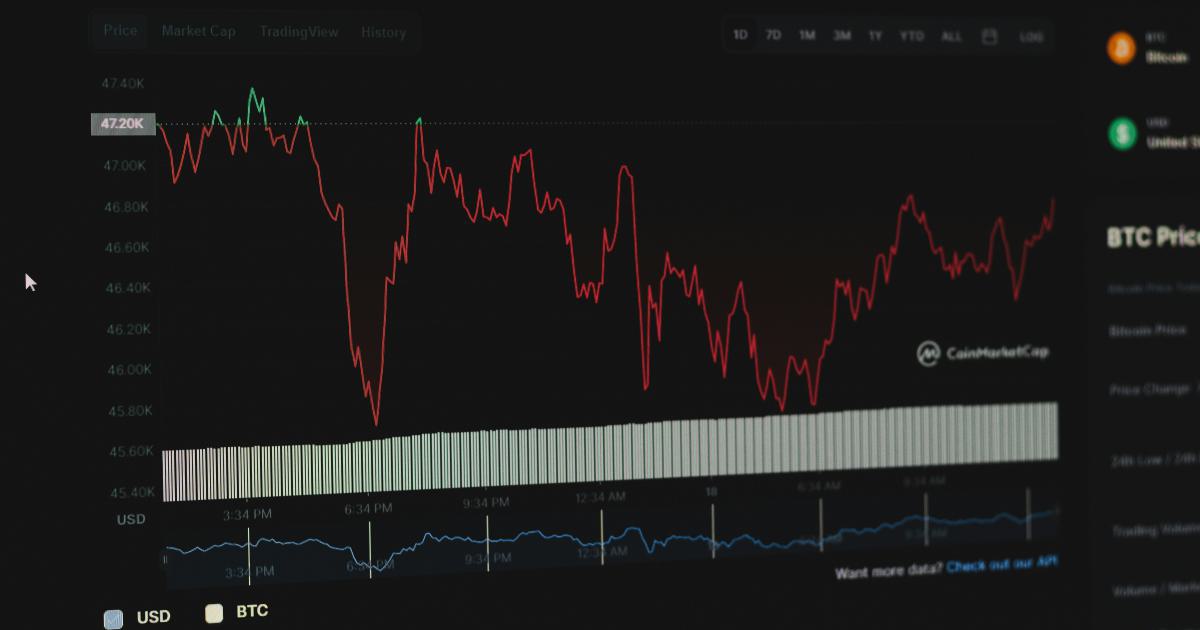Avoiding Common Pitfalls in Effective Portfolio Diversification Techniques

Effective portfolio diversification techniques are crucial in safeguarding investments against market volatility and ensuring long-term financial growth. In today’s complex financial landscape, many investors fall prey to common pitfalls that can undermine even the best-laid plans. Understanding these challenges is the first step towards constructing a resilient and balanced investment portfolio. This article explores in depth the pitfalls encountered in portfolio diversification, provides real-world examples, and offers actionable solutions to ensure you can steer clear of these traps. Whether you are a seasoned investor or just starting out, the insights shared here are designed to help you make informed decisions backed by effective portfolio diversification techniques.
Investors often make the mistake of either over-diversifying—thus diluting potential returns—or under-diversifying, leaving their portfolios vulnerable to significant risks. Both extremes can be problematic. Inadequate risk assessments, emotional decision-making, and a lack of periodic review may lead to misallocation of assets. By understanding where and why these pitfalls occur, you can begin transforming your strategy into one that is not only robust but also optimized for your individual financial goals.
In this comprehensive guide, we will delve into the nature of diversification, discuss various pitfalls, and provide detailed recommendations on how to implement effective portfolio diversification techniques. Our discussion is supported by examples, case studies, and expert insights that will help bridge the gap between theory and practice.
Understanding Portfolio Diversification
Portfolio diversification is the process of allocating investments across various financial instruments, industries, and other categories to reduce exposure to any single asset or risk. The underlying concept is simple: by spreading your investments, you reduce the impact of any one poorly performing asset on your portfolio’s overall performance.
What is Portfolio Diversification?
Portfolio diversification involves a balanced mix of asset classes such as stocks, bonds, real estate, and commodities. The objective is to produce higher returns while reducing risk by investing in different areas that would each react differently to the same event.
Diversification is not merely about holding many different assets; it is about ensuring that the assets are not correlated. For instance, putting all your money in technology stocks could be risky because if the tech sector suffers, your entire portfolio might be severely impacted. The effectiveness of diversification is enhanced when the selected assets display low correlations with one another.
Key Principles
There are several key principles that investors should adhere to when diversifying their portfolios:
- Asset Allocation: Correctly allocating assets among different categories based on risk tolerance and time horizon.
- Correlation Assessment: Evaluating how different assets move in relation to one another to avoid overlapping risks.
- Periodic Review: Regularly revisiting portfolio composition to ensure it aligns with changing market conditions and personal investment goals.
- Cost Management: Considering transaction costs and tax implications as frequent rebalancing of the portfolio might erode potential gains.
By adhering to these principles, investors can use effective portfolio diversification techniques to not only capture growth opportunities but also shield themselves from market swings.

Common Pitfalls in Portfolio Diversification
Even when utilizing effective portfolio diversification techniques, investors are prone to several pitfalls that can degrade the performance of their investments. Recognizing and understanding these common errors is vital in avoiding unnecessary losses.
Overdiversification
One of the most frequent mistakes novice investors make is overdiversification. Overdiversification occurs when a portfolio contains too many investments, diluting the potential for higher returns. While on the surface it might appear that holding many assets minimizes risks, an overly diversified portfolio could lead to:
- Diminished overall returns due to the inclusion of subpar assets.
- Increased complexity in managing and monitoring investments.
- Higher transaction costs and potential tax inefficiencies due to constant trading and rebalancing.
Real-world example: A retail investor might decide to invest in dozens of mutual funds and individual stocks, believing that spreading risk is the prime objective. However, by holding so many assets, the investor ends up with minimal exposure to high-performing sectors.
Strategies To Avoid Overdiversification
To prevent overdiversification, consider the following actionable steps:
Define clear investment goals and risk tolerance.
Focus on quality investments rather than quantity.
Regularly assess asset correlation to ensure that the investments complement each other.
Limit the number of assets, focusing only on those well-researched and fundamentally strong.
Underdiversification
At the other end of the spectrum lies the pitfall of underdiversification. Investors who concentrate too heavily on one or a few asset classes expose their portfolios to significant risk, as adverse market conditions in that specific sector could lead to major losses.
For instance, during the economic downturn in 2008, many investors who were heavily invested in the housing and real estate sectors suffered massive losses. Underdiversification not only heightens risk but also reduces the potential for catching gains from other sectors that might be performing well.
How to Avoid Underdiversification
- Spread Investments: Allocate assets among varied sectors, industries, and geographic regions.
- Include Defensive Assets: Consider adding more stable assets like bonds or defensive stocks that might perform differently in adverse economic conditions.
- Regular Rebalancing: Conduct periodic reviews of the portfolio to ensure a balanced spread of risk. This approach not only helps in correcting the imbalance but also encourages disciplined investing.
Misjudging Asset Correlations
Another common pitfall is assuming that different assets will always move independently of each other. In many cases, assets that appear uncorrelated in historical data may start moving in tandem under stress conditions such as financial crises.
For example, during the 2008 financial crisis, many seemingly unrelated asset classes experienced simultaneous declines, undermining the investors' diversified portfolios. Asset correlations are dynamic and can change in response to economic events, necessitating continuous reassessment.
Mitigating the Risk of Misjudged Correlations
Ongoing Research: Regularly update your understanding of asset correlations based on market trends and economic forecasts.
Diversify Beyond Traditional Assets: Consider including alternative investments like commodities, hedge funds, or even cryptocurrencies, which may have unique correlation structures.
Stress Testing: Simulate market conditions to understand how your portfolio might perform during a crisis. Tools like scenario analysis or Monte Carlo simulations can provide valuable insights.
Effective Portfolio Diversification Techniques in Practice
Establishing a Robust Asset Allocation Strategy
A well-structured asset allocation strategy is the backbone of effective portfolio diversification techniques. It involves distributing investments across various asset classes based on individual risk profiles and market expectations. Here are key steps to follow:
Assess Your Financial Goals: Understand your short-term and long-term objectives, whether planning for retirement, buying a home, or accumulating wealth.
Determine Risk Tolerance: Evaluate how much risk you are willing to take, using risk profiling tools or consulting with financial advisors.
Research Asset Classes: Learn about different asset classes including equities, fixed income, and alternatives like real estate.
Implement and Monitor: After setting target allocations, continuously monitor the portfolio and rebalance periodically to maintain the intended strategy.
Integrating Alternative Investments
Alternative investments offer an additional layer of diversification by providing exposure to assets that do not necessarily follow the same risk-return patterns as traditional investments. These can include:
- Real estate investments
- Commodities such as gold or oil
- Private equity
- Hedge funds
- Cryptocurrencies
By incorporating alternative assets, you can mitigate risks associated with market volatility, as these investments might behave differently during economic uncertainties.
Using Effective Portfolio Diversification Techniques to Manage Emotional Investing
Investors are often influenced by emotional biases such as fear and greed, leading to impulsive decisions. Effective portfolio diversification techniques help in reducing the emotional attachment to any single asset by physically spreading your risks. Some strategies include:
- Automated Rebalancing: Utilizing robo-advisors or automated tools to realign your portfolio reduces the chance of emotional interference.
- Setting Rules-Based Strategies: Establish criteria for buying or selling assets that are not swayed by market hype.
- Education and Discipline: Consistently educate yourself on market behavior while sticking to a well-devised investment plan.
Understanding that markets will always have ups and downs is essential. The best approach is to adopt a disciplined, measurable method that relies on analytics rather than emotion.

Mitigating Transaction Costs and Taxes
One overlooked pitfall in portfolio diversification is failing to account for transaction costs and tax implications. Frequent buying and selling can incur significant fees, which, over time, may reduce overall returns.
Actionable Recommendations:
Use Low-Cost Platforms: Leverage discount brokers and trading platforms that offer competitive transaction fees.
Tax-Efficient Investing: Consider tax-advantaged accounts and strategies such as tax-loss harvesting to minimize tax liabilities.
Long-Term Horizon: Adopt a long-term investment approach to reduce the frequency of trades and avoid unnecessary costs.
High transaction costs can erode profitability, particularly when employing sophisticated portfolio diversification strategies. It’s essential to strike a balance between maintaining a diversified portfolio and minimizing friction costs.
Emphasizing Regular Portfolio Reviews and Rebalancing
A significant challenge faced by many investors is complacency. Markets change, asset correlations evolve, and a portfolio that was once well-diversified may become imbalanced. Regular reviews of your portfolio are crucial for maintaining its integrity and effectiveness.
Best Practices for Portfolio Reviews:
- Annual or Semi-Annual Check-Up: Schedule regular assessments of your portfolio’s performance.
- Benchmarking Against Goals: Compare current asset allocation with your financial objectives.
- Adjusting Allocations: Rebalance your portfolio to realign with your risk tolerance and market outlook.
Rebalancing is not about making constant changes but ensuring that your investment strategy remains aligned with your desired risk profile. By committing to regular portfolio reviews, you can catch minor issues before they lead to major setbacks.
Avoiding Behavioral Pitfalls in Investment Decisions
Investors often become victims of their own psychology. Behavioral biases such as overconfidence, loss aversion, and herd mentality can derail the effective utilization of portfolio diversification techniques.
Overconfidence and Its Effects
Overconfidence in one’s market predictions may lead to underestimating risks. An investor might concentrate on a few high-performing stocks or sectors believing that market dynamics will always favor them, eventually exposing the portfolio to undue risks.
Mitigation Strategies:
- Adopt a systematic approach in the asset allocation process.
- Rely on data-driven decisions rather than gut feelings.
- Seek advice from financial professionals to gain an objective perspective on market trends.
The Impact of Loss Aversion
Loss aversion is another behavioral trap where the fear of losses can lead investors to make suboptimal decisions, such as prematurely selling valuable assets during market downturns. This reactive behavior can lock in losses and hinder long-term growth.
Practical Steps to Overcome Loss Aversion:
Set Predefined Exit Strategies: Determine in advance what levels of loss are acceptable.
Diversify Risks: A balanced portfolio can help mitigate the emotional impact of a downturn in one particular asset.
Focus on Long-Term Goals: Maintaining a long-term perspective often helps reduce the psychological pressure during volatile market conditions.
Herd Mentality and Imitative Investing
Another behavioral pitfall is herd mentality, where investors follow the crowd without conducting independent analysis. This often results in buying high and selling low. To counter herd mentality:
- Conduct your own research and analysis.
- Use effective portfolio diversification techniques to construct a tailored portfolio that meets your personal risk tolerance.
- Avoid getting swayed by market rumors and ephemeral trends.
Case Studies: Overcoming Diversification Pitfalls
Understanding pitfalls in theory is useful; however, real-world examples provide deeper insights. Here are two case studies that illustrate the challenges and solutions related to portfolio diversification.
Case Study 1: The Overdiversified Fund
In one notable instance, a well-known investment firm tried to appeal to risk-averse clients by constructing an extremely diversified fund that held over 120 different stocks. While the idea was to reduce risk, the actual result was a portfolio that underperformed compared to more strategically diversified funds. The firm encountered several issues:
- Significant transaction costs as minimal gains in various stocks were eroded by fees.
- Lack of focus on high-performing sectors, resulting in diluted returns.
Upon reassessing their approach, the firm streamlined the fund to include a carefully selected basket of 30-40 high-quality stocks from distinct sectors. They implemented periodic reviews and rebalancing strategies, which improved their performance markedly in subsequent years.
Case Study 2: The Emotionally Charged Investor
Another scenario involved an individual investor who fell into a pattern of impulsive trading based on market sentiment. During periods of market rally, the investor increased exposure to trending tech stocks, only to face steep losses during a market correction. This investor experienced:
- Overconfidence in predictions based on short-term performance.
- Loss aversion that resulted in selling stocks prematurely during dips.
- Poor execution of effective portfolio diversification techniques, as a large portion of their portfolio was tied up in one volatile sector.
After consulting with a financial advisor, the investor adopted a more disciplined approach—diversifying across asset classes, setting predefined risk limits, and using automated rebalancing tools. This change led to a more balanced portfolio and steadier returns even during market turbulence.

Best Practices for Implementing Effective Portfolio Diversification Techniques
Taking the insights from our discussions and case studies, here are actionable best practices to help you avoid common pitfalls and successfully diversify your portfolio:
1. Define Clear Investment Objectives
Understanding your investment goals is paramount. Whether focusing on capital growth, income generation, or capital preservation, your objectives will drive the structure of your portfolio. Create a well-documented investment plan that includes:
- Specific financial goals
- Time horizons
- Risk tolerance levels
2. Prioritize Quality Over Quantity
In your quest for diversification, resist the temptation to hold a large number of investments. Instead, focus on:
- Thorough research and analysis of each asset
- Selecting investments that align with your long-term strategy
- Avoiding redundant investments that offer similar risk profiles
3. Regularly Monitor and Rebalance Your Portfolio
Market dynamics change, and so should your portfolio. Set a schedule that allows you to:
- Review the performance of each asset class
- Rebalance to maintain the desired asset allocation
- Adjust your strategy based on evolving market conditions
4. Leverage Tools and Professional Advice
Modern technology allows for sophisticated portfolio tracking and management. Utilize:
- Robo-advisors for automated rebalancing
- Financial planning software for scenario analysis and stress testing
- Professional consultants who offer objective advice based on market research
5. Focus on Continuous Learning
Market conditions evolve constantly. To stay ahead:
- Engage with financial news and literature
- Participate in investment seminars and webinars
- Join investor communities to exchange perspectives and strategies
6. Manage Costs and Taxes Efficiently
Adopt strategies that minimize the impact of friction costs:
- Use exchange-traded funds (ETFs) and low-cost index funds as cost-effective investment vehicles.
- Consider tax-advantaged accounts and be mindful of tax strategies such as tax-loss harvesting to optimize returns.
7. Build Flexibility into Your Plan
To navigate unforeseen market challenges, cultivate flexibility by:
- Leaving room in your portfolio for opportunistic investments
- Adapting your asset allocation based on new economic insights
- Remaining nimble while still adhering to your overall strategy
Implementing these best practices not only helps avoid the common pitfalls of portfolio diversification but also fortifies your overall investment strategy for long-term success.

The Future of Portfolio Diversification
As investment landscapes evolve, investors are increasingly looking into technological innovations and alternative asset classes. The future of portfolio diversification involves not just a static mix of assets, but a dynamic interplay driven by evolving market data, machine learning algorithms, and global economic shifts.
The Role of Technology
Advancements in technology have revolutionized portfolio management:
- Algorithms now can process vast amounts of data to predict market behavior.
- Robo-advisors offer personalized, automatic rebalancing and diversified strategies that are accessible even to novice investors.
- Data analytics tools allow for more nuanced risk assessments, enabling investments in assets that were traditionally overlooked.
These technological enhancements bring about the potential for more intelligent diversification that can adapt in real time to market changes—resulting in portfolios that are both resilient and agile.
Trends in Alternative Investments
The growing interest in sustainable investing, impact investing, and cryptocurrencies is reshaping modern portfolio diversification. Investors are increasingly considering:
- ESG (Environmental, Social, and Governance) criteria which integrate social responsibility with risk management.
- Cryptocurrencies and blockchain-based assets as a hedge against traditional market volatility.
- Real estate crowdfunding and peer-to-peer lending platforms as means to access traditionally illiquid markets.
By incorporating these emerging asset classes, investors can benefit from new opportunities while further reducing exposure to conventional market risks.
Adaptive Diversification Strategies
The key to future-proofing any investment strategy lies in developing adaptive diversification frameworks. Instead of relying solely on historical data, investors are now:
- Implementing dynamic asset allocation models that adjust to real-time market performance.
- Utilizing predictive analytics to preemptively shift asset allocations.
- Embracing a fluid approach to diversification that can pivot as new information becomes available.
This dynamic methodology not only mitigates risks but also places portfolios in a position to capitalize on market opportunities more efficiently.
Conclusion: Steering Clear of Pitfalls for a Brighter Financial Future
Navigating the intricate world of investments requires a well-thought-out strategy that anticipates and mitigates potential pitfalls. As we have discussed throughout this article, effective portfolio diversification techniques play a crucial role in building a resilient investment strategy. By avoiding common mistakes such as overdiversification, underdiversification, misjudging asset correlations, and succumbing to emotional biases, investors can safeguard their portfolios and secure steady growth over time.
Embracing a disciplined approach that includes thorough research, regular monitoring, and a willingness to adapt to changing market conditions will empower you to manage risk intelligently. Real-world case studies and actionable recommendations presented here serve as a comprehensive guide to help you build a diversified portfolio that is robust, balanced, and tailored to your financial goals.
In the end, the art of successful investing lies in the ability to learn from past missteps and continuously improve your strategy. As markets evolve, so too should your approach—staying informed, flexible, and committed to sound principles of risk management and diversification. Armed with these insights and effective portfolio diversification techniques, you are better equipped to navigate the uncertainties of the financial landscape and achieve lasting financial success.
Unlock the Power of Crypto Trading with Binance
Tired of missing out on lucrative trading opportunities? Elevate your game with Binance, the leading crypto exchange trusted by millions worldwide.
With lightning-fast execution, institutional-grade security, and a user-friendly interface, Binance empowers you to seize market moves with confidence. Plus, enjoy access to 100+ cryptocurrencies and cutting-edge tools. Join now and experience the future of trading.
Unmatched Trading Power with Binance
Are you ready to take your trading game to new heights? Binance offers a cutting-edge platform for seamless cryptocurrency transactions.
With lightning-fast execution, top-tier security, and a vast selection of coins, you'll have all the tools you need to maximize your profits. Join now and experience the future of trading.


